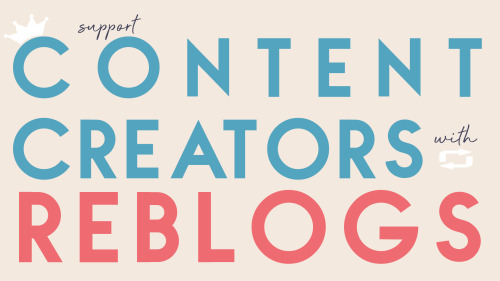“Getting Newsrooms Out From Under The Management Of Hedge Funds, Tech Billionaires, And Other Corporate
“Getting newsrooms out from under the management of hedge funds, tech billionaires, and other corporate conglomerates and into the hands of citizen-activists providing oversight for the proper reporting and representation of crucial community issues would be game-changing to the practice and consumption of journalism, promoting real trust and engagement in news through the active participation of the people it serves.”
— Trustworthy News for a New Normal
More Posts from Arieso226 and Others

if you start a post with "why isnt anyone talking about this" or "while yall are doing x y and z this atrocious thing happened and if u dont know about it the second it happens ur part of the problem actually" im not gonna read it until u change ur tone u know damn fucking well how news gets spread and how the media works in 2021 to be acting like everyone knows everything at every second when theyre being bombarded with news 24/7. stop guilt tripping people its fucking gross
Who created the manuscript?
NO. 1
Ever since the rise of modernism, it feels like people have only looked to see such medieval manuscripts in museums or hear about them in lecturers. The beginning of medieval, or illuminated manuscripts were beautiful but so very old and have to be handled with great care. Archaeologists and anthropologists have discovered and studied such manuscripts as a testament to keeping record of humanity’s past forms of writing. But would we ever get to such technological advancements, in forgetting our past, without it? This report explains the creation of how medieval manuscripts came to pass.
NO. 2
From the met museum, ‘Unlike the mass-produced books of our time, an illuminated manuscript is unique, handmade object. In its structure, layout, script, and decoration, every manuscript bears the signs of the unique set of processes and circumstances involved in its production, as it moved successively through the hands of the parchment maker, the scribe, and one or more decorators or illuminators.’’ Illuminated manuscripts began in Ireland after the fall of the western Roman empire. Christianity came to Ireland around 431 A.D, introduced by Palladius and reinforced by the ministry of a Roman Briton named Patricius, or St. Patrick as he’s called today. He was kidnapped at the age of sixteen, and spent six years in captivity before escaping back to Britain. Upon returning, he was met with ‘distrustful druids’, and ‘murderous bandits’, and by bribing tribal kings did he made it out alive.
NO. 3
Eventually, he came back to Ireland in the 5th century. The island became lidded with monasteries in the 6th, and in the 7th the scribes of these centers of religious life were experimenting with new forms of decoration and bookmaking, the better to reflect God’s glory in the written word.
The first illustrated book to be found by archaeologists was the Egyptian ‘Book of the Dead’, a guidebook for the afterlife in which those in question would come to face-to-face with the jackal headed god Anubis, where he would balance their heart against a feather to determine what would become of them. A fortunate soul would either be in the Elysian paradise, the ‘Field of Peace’, or travel the night sky with Ra in his sun-boat, or rule the underworld with Osiris; those less fortunate would be eaten by the chimera looking god Ammit the soul-eater, for her body was part crocodile, lion and hippo. From Keith Houston’s, The Book, ‘’One of the main reasons the Book of the Dead is so well studied is because so many copies have survived, their colorful illustrations intact for Egyptologists to pore over endlessly. And though their subject matter may have been a little monotonous, it is clear that the ancient Egyptians were past masters at the art of illustrating books.’’
NO. 4
Under Charlemagne’s the Great Holy Roman Empire, politics, religion and art flourished. Monks filled their libraries with tens to thousands of volumes, where they borrowed and copied books to expand their holdings and occasionally to sell to laypeople, and those who wrote and collected realized the importance of illustration was towards a society of illiterate people. The monks who were in charge of the survival of Europe’s history were very vocal about physical maladies and working conditions. The dismal chambers were called ‘scriptoria’ or the writing rooms, which was the most important features of a medieval monastery, other than the Church itself. But society within the empire was transformed. Skilled peasants were leaving their rural homes for towns and cities, while the cities themselves, such as Johannes Gutenberg’s hometown of Mainz fought to eke out some measure of independence from the old feudal aristocracy. Money was assuming a progressively larger role, and it spoke louder than an inherited title. Always a reflection of the societies that had made them, books were changing in response. Gutenberg’s printing press, which churned out books too rapidly for them to be illustrated by hand, is often blamed for killing off the illuminated manuscript.
You know what's wrong with this? I could totally see this happening. Like, they and all the avengers and Loki reading the books. Except Loki is with the four of them, and laughing maniacally ( EHEHEHEHE) when Steve and Tony look at Thor like this





The History of Greek organizations in Black HBCU's.
NO. 1
Black Greek sororities: black fraternities and sororities have a significant impact on students and faculty, providing them with the tools to success and a good development/enhancement towards good leadership skills. These ‘organizations’, placed on many contemporary cases in the U.S produce hundreds of college future leaders. And though both fraternities and sororities produce academic success, lower dropout rates, and leadership opportunities for those members, one of the critiques is that it also excludes others from similar opportunities.
N0. 2

‘‘Among African American students, two student collegiate groups—Black student organizations and historically Black Greek-letter organizations (BGO’s)—have been found to be the benefactors of leadership experiences unique to their culture and to create unique leadership opportunities for their members. Despite these plaudits, fraternities and sororities have received increased negative publicity in recent years, causing many in society, and in higher education specifically, to question the rights of these organizations to exist, due to recent serious and widely publicized pledging (or hazing) cases.’’

N0.3
Hazing as a ritual is seen as no more than bullying and brings extensive problems to the life of a college student trying to fit in, as she/he is subject to peer pressure by other students. Many of these concerns of BGO’s were up to question and remained unresolved, like the legitimacy of ‘Greek life’ as it relates to the academic vision of higher education. ‘‘Between 1906 and 1920, eight of the most prominent Black Greek-letter organizations were established. The creation of the Black fraternity had a dual purpose.

No. 4
First, these organizations were established for the greater purpose of pooling the resources of African Americans in the hopes of acquiring an education. Second, these organizations were formed as an attempt by Black students to gain acceptance into American society. Despite the great influence and vast membership that these organizations possess, the activities of the Black Greek letter organization have included secret meetings, selective membership, and a preference for lighter-complexed members. Moreover, the failure and shortcomings of the Black Greek-letter organization have allowed Black elites to create a separate privileged society based on snobbery and arrogance and have thus enabled these organizations to perpetuate the vicious cycle of racial prejudice and White Supremacy.


Happy Chinese New Year! The year of the tiger~


MAG-FUCKING-NIFICENT!!!

I can understand not wanting to get pregnant or have kids but y'all do not need to take that out on pregnant people themselves

tumblr is not instagram. likes on tumblr, while appreciated, are effectively useless in helping a creator reach a wider audience.
when you like something, it goes into your own personal folder. and chances are good that, even if it’s public, no one will see it.
likes do not get shared to the dashboard, where others can actually see and have the opportunity to engage.
liking a creation only really benefits you, and not the creator or the rest of the tumblr community!
likes are great for bookmarking, saving posts with the intent of a later reblog, engaging with certain posts that don’t need to be shared (ie. personal posts), posts that you are not comfortable sharing, and prepping a queue.
REBLOGGING is the best way to support a content creator!
reblogs boost attention and engagement. it actually allows for that content to be shared with others. which, really, is what tumblr is all about!
tldr; reblogs > likes. please don’t take content creators for granted. this site would be nothing without them!
-
 bemusedstorm liked this · 1 year ago
bemusedstorm liked this · 1 year ago -
 arieso226 reblogged this · 2 years ago
arieso226 reblogged this · 2 years ago -
 arieso226 liked this · 3 years ago
arieso226 liked this · 3 years ago -
 mypoortenderhead reblogged this · 3 years ago
mypoortenderhead reblogged this · 3 years ago -
 mypoortenderhead liked this · 3 years ago
mypoortenderhead liked this · 3 years ago -
 theelkmechanic reblogged this · 3 years ago
theelkmechanic reblogged this · 3 years ago -
 neverknwsbest liked this · 3 years ago
neverknwsbest liked this · 3 years ago -
 comtedemoney liked this · 3 years ago
comtedemoney liked this · 3 years ago -
 taptoretry liked this · 3 years ago
taptoretry liked this · 3 years ago -
 pasdedeux liked this · 3 years ago
pasdedeux liked this · 3 years ago -
 buffleheadcabin liked this · 3 years ago
buffleheadcabin liked this · 3 years ago -
 hellolovelyscientist reblogged this · 3 years ago
hellolovelyscientist reblogged this · 3 years ago -
 hellolovelyscientist liked this · 3 years ago
hellolovelyscientist liked this · 3 years ago -
 thammit reblogged this · 3 years ago
thammit reblogged this · 3 years ago -
 thamit liked this · 3 years ago
thamit liked this · 3 years ago -
 azspot reblogged this · 3 years ago
azspot reblogged this · 3 years ago
26-year-old Anthro-Influencer Anthropology, blogger, traveler, mythological buff! Check out my ebook on Mythology today👉🏾 https://www.ariellecanate.com/
208 posts
